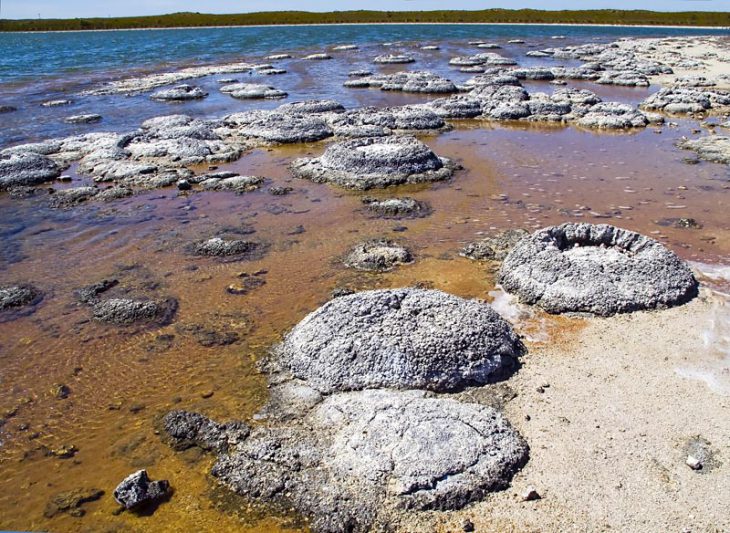As of the writing of this article, we have confirmed the existence of 4,569 planets beyond our solar system. That number is growing rapidly. As our awareness of these planets grows, the possibility that life exists beyond Earth becomes more compelling. This has led scientists to ramp up their search for signs of life on other planets. However, life on another planet might be very different from life on Earth. Scientists accept they have no idea what the chemistry of extraterrestrial life might be like. So, how will scientists know it if they see it?
When scientists look for signs of life on other planets, they look for features called biosignatures. Biosignatures are physical or chemical evidence that suggests the presence of a living system. Detecting a biosignature on another planet wouldn’t prove the existence of alien life. It would simply mean that scientists should investigate that planet closely for more conclusive evidence of life.
Biosignatures of Earth life include rocks called stromatolites and large, carbon-based molecules like folic acid. Stromatolites are layered rocks that some microorganisms form by trapping or depositing mineral sediments in shallow water. Folic acid is a complex molecule composed of several of the atomic building blocks that all living cells on Earth need to survive. It has 19 carbon atoms, 19 hydrogen atoms, seven nitrogen atoms, and six oxygen atoms.
Stromatolites and formic acid are specifically signatures of Earth life. Alien life forms may produce the same or very similar rock formations and carbon-based molecules. We have no way of knowing until we find them. Scientists could easily miss important evidence if they design missions to search for life on other planets based only on what they know about Earth biosignatures.
Recently, a team of scientists suggested that the complexity of a molecule like folic acid, rather than its chemical composition, might be a biosignature common to all forms of life, even life that is very different from Earth life. Scientists usually look for signs of life by looking for molecules made of the same stuff as Earth life. A better way might be to look for complexity in general — molecules that require many steps to make — whether they resemble Earth chemicals or not. To test this idea, the scientists had to come up with a way to quantify the complexity of a molecule.
They did this by assigning molecular assembly numbers to many different kinds of molecules formed by living things and non-living systems. Molecular assembly numbers (MA) define the smallest number of steps it takes to build a molecule. The scientists reasoned that molecules that require many steps to form, in other words molecules with high MAs, are very unlikely to form unless their formation is directed by some type of encoded information. Life on Earth encodes information in its DNA. Many scientists believe that life requires some way to encode information so that it can reproduce and evolve.
When the scientists assessed the MAs, they found that all of the molecules with a MA greater than 15 were formed by living things. They also found that some molecules formed by living things had MAs less than 15. This means that a mission searching for molecules with MAs greater than 15 might still miss some biosignatures, but it wouldn’t mistake any molecules formed by non-living systems for biosignatures. Such a mission would also be able to detect biosignatures of living things that aren’t carbon-based. A capability not found in current methods used to search for chemical biosignatures.
Once the scientists determined that they could quantify the complexity of a molecule and use MAs to recognize molecules formed by living things, they had to find a way to measure MAs on another planet.
They did this using a technique called mass spectrometry, which NASA has successfully used for different purposes on several planetary missions. With mass spectrometry, scientists can break complex molecules into smaller pieces, count how many different kinds of pieces the molecules broke into, and find the mass of those pieces. The scientists found a strong correlation between molecules that broke into many kinds of large pieces and molecules with MAs greater than 15.
The ideas that these scientists proposed to detect alien life are novel. Maybe someday they will help us find alien life that is equally novel.



